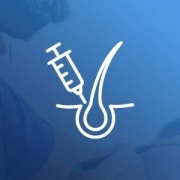What is Injectable Plasma (PRP)?
To have holistic comprehension about what injectable plasma is, one should first know some other elements related to the topic.
The first element is to know what plasma is. Plasma is a component of your blood that contains particular factors, or proteins, that aid in the clotting of your blood. It also has proteins that promote cell development. Researchers created PRP by extracting and concentrating plasma from human blood.
Injecting PRP into injured tissues is thought to encourage your body’s production of new, healthy cells, so promoting healing. Researchers believe that because the tissue development components in the prepared growth injections are more concentrated, the body’s tissues may mend faster. However, the treatment has yet to be definitively established. The Food and Drug Administration (FDA) has also not approved it as a treatment. However, there are certain instances where this strategy has had a favorable impact on the healing process.
So, for further comprehension, it would probably be beneficial to know in what ways and purposes experts employ this technique.
Here are certain aims and fields;
Acute wounds;
PRP injections have been utilized by doctors to treat acute sports injuries such as hamstring strains and knee sprains.
Tendon injuries;
Tendons are tough, thick tissue bands that connect muscle to bone. They frequently take a long time to heal after being injured. That means that the injections of PRP are used with an aim to help people heal better and in shorter period when they got injured for a reason.
Repair after surgery;
PRP injections are sometimes used after surgery to heal a torn tendon such as the rotator cuff tendon in the shoulder or ligaments such as the anterior cruciate ligament.
Osteoarthritis;
PRP injections in the knee may benefit persons suffering from osteoarthritis. PRP injections were found to be more successful than hyaluronic acid injections in treating osteoarthritis.
Hair thinning;
PRP has been used with an aim to boost the cell improvement in the scalp by doctors. With this, they are trying to encourage hair growth and prevent hair loss. PRP injections, on the other hand, are successful in treating androgenic alopecia, popularly known as male pattern baldness.
Moreover, if you want further knowledge, the next step should be about the process of injecting the plasma. Respectively, a blood sample will be drawn by a medical expert. The amount of blood obtained for injection into the scalp should be 20 milliliters, which is little more than one teaspoon. The blood will then be centrifuged. For around 15 minutes, the centrifuge equipment spins rapidly, causing the blood components to separate. Following that, a technician will prepare the separated plasma for injection into the affected area.
On the other hand, because PRP involves injecting a chemical into the skin, there are certain potential side effects that you may encounter following the procedure.
Here are the list of these possible side effects;
- Infection
- Nerve damage
- Discomfort at the injection site
- Tissue harm
As you may see, the possible side effects of the protocol are not more than any cosmetic operation or treatment.
To sum up, injecting PRP into wounded tissues is a procedure used by surgeons to stimulate your body’s synthesis of new, healthy cells, hence aiding recovery. It is believed that as the tissue development components in prepared growth injections are more concentrated, the body’s tissues may heal more quickly.
What is PRP treatment good for?
PRP treatment is good for these problems:
- Wrinkles
- Blemishes
- Acne
- Scars
- Skin cracks
Wrinkle marks and sagging will decrease after the PRP treatment. Applying stain treatments such as Peeling and laser in combination with PRP speeds up the treatment process and supports permanent results.
How long do the PRP injections last?
PRP therapy is a clinical procedure that was developed based on the belief that your system has the power to cure itself. Most people are particularly curious about the duration of PRP infusions.
PRP injections are shown to be helpful for six to nine months in trials. The duration of a PRP procedure, on the other hand, is determined by several parameters. These parameters involve the problem being treated with PRP injections, the patient’s overall wellness, and how the system reacts to the first PRP therapy. As with everything in healthcare, every individual will recover in their own unique manner as a result of therapy.
References:
https://www.hss.edu/condition-list_prp-injections.asp
https://www.webmd.com/fitness-exercise/platelet-rich-plasma-injections#1



